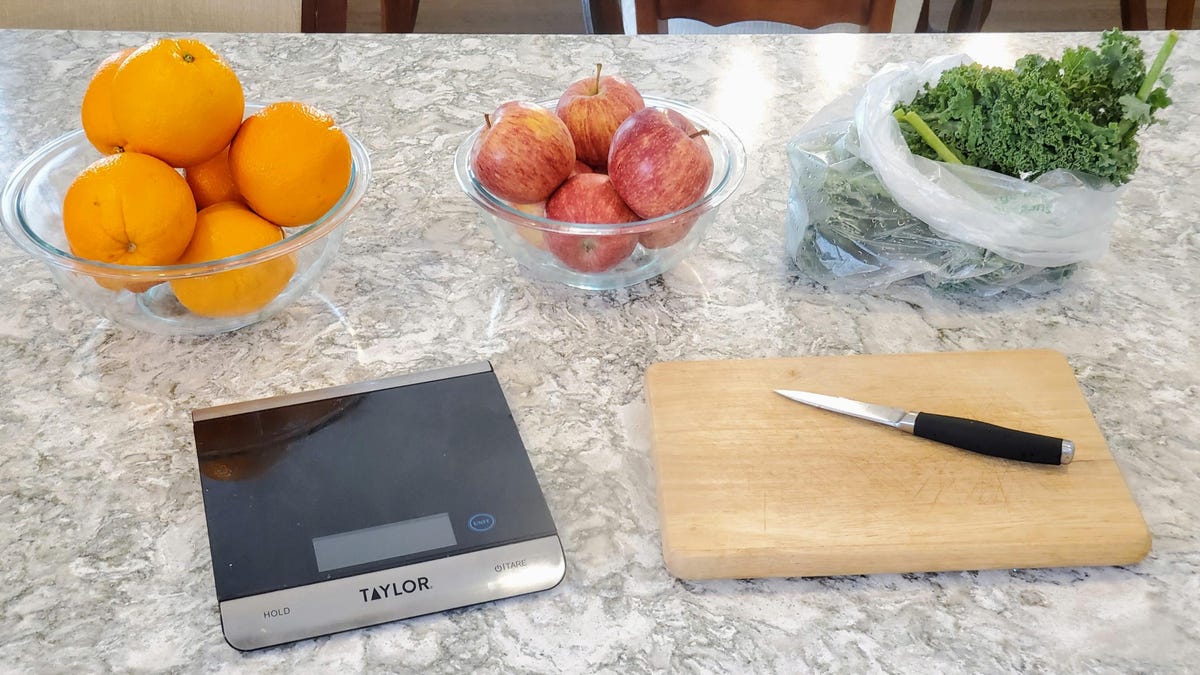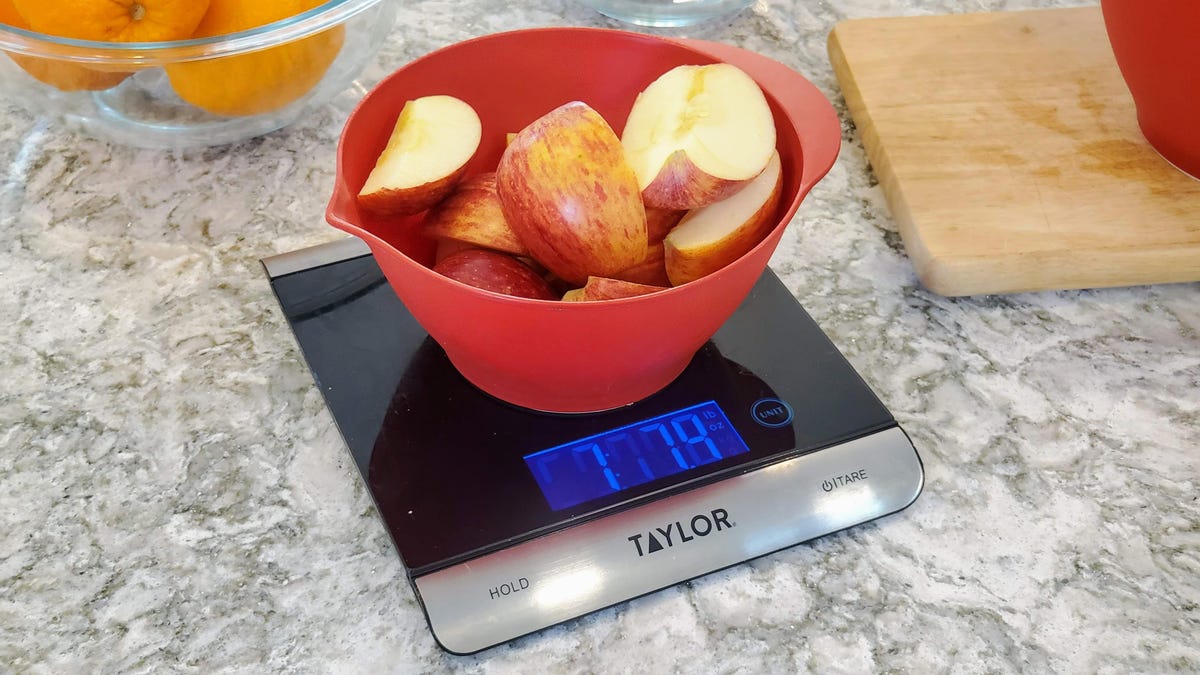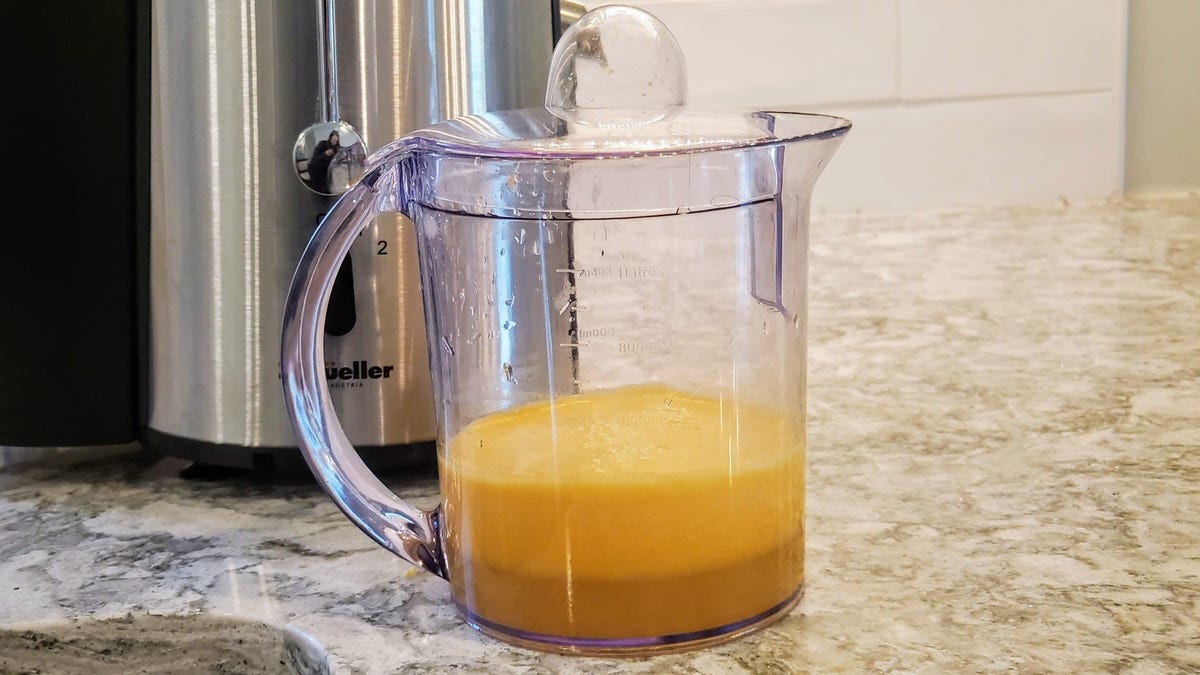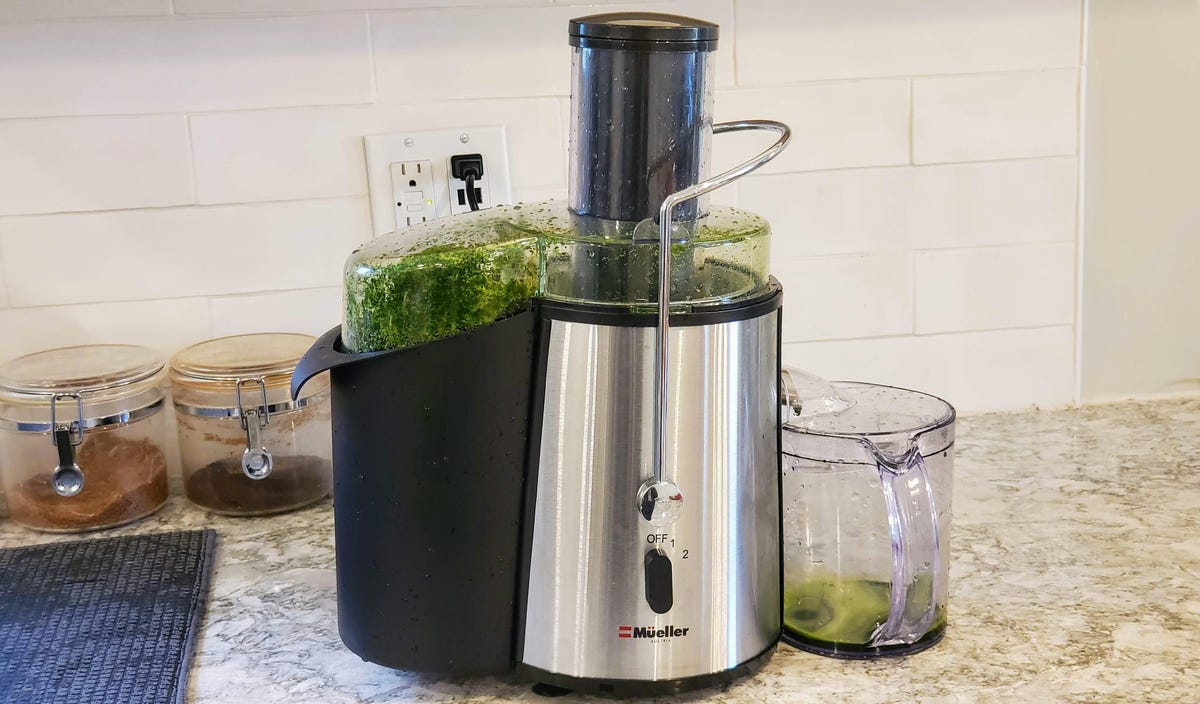The 3 Best Juicers of 2024, Tested by CNET Editors

[ad_1]
When testing to find the best juicer for 2024, we factored in the overall functionality and intuitiveness of each model, how easy the juicer is to clean (you’ll want to clean them after every use), and most importantly, how much juice you get out of it. a given pile of fresh produce. The best juicer should also have a feed tube large enough even for large pieces of fruit, roots and vegetables. Even if you’re only planning on juicing citrus for cocktails or starting a modern celery juice cleanse, there are plenty of excellent juicer options to help. Testing juicers means a lot of juicing. We collected piles of apples and oranges and bunches of cabbage to see how these juicers handled produce of varying textures and densities.

I tested the juicers with oranges, apples and kale.
Apples
To test the juicer’s high-speed function, we cored and quartered three red apples. (We used organic Gala apples in this round of tests.) We then weighed the apples, the empty juice container, and the empty juicer on a large kitchen scale. We then juiced the apples on the juicer’s high setting or, if it had multiple speeds, the apple speed recommended by the manual.

Want to make delicious apple juice?
The result was a pink juice with a light brown pulp. After juicing was complete, we measured the filled juice container and juicer with the apple waste to determine how much juice came out of the apples and how much of the apple went into the pulp container. This is the same method we used for oranges and cabbage.
oranges
We peeled three oranges and removed the fibrous center. We then measured them along with the empty juicer and juice container. Depending on the size of the juicer chute, we also cut the oranges into slices that fit the chute.

Fresh orange juice can be extremely frothy.
To squeeze orange juice, we set the juicer to low speed, a good setting for soft fruits like oranges. After the juicer was done, we weighed everything again and took notes.
Cale
No juicer testing would be complete without a leafy green element. It’s worth noting here that most centrifugal juicers won’t do as well as a cold-press juicer (also known as a slow-mash juicer) for juicing vegetables. However, it is possible and some centrifugal juicers are up to the task.

Juicing cabbage is certainly colorful.
As with the apple and orange juice tests, we measured and recorded the weight of the equipment as well as three large cabbage leaves. (No trimming necessary here; the cabbage stalks have a lot of nutritional value and will pass through the juicer.) We saw a lot less volume when it came to juicing the cabbage. If you’re into juicing leafy produce, a masticating juicer might be a better bet for you.
Comparing the best juicers
| Brand | % extracted orange juice | % extracted apple juice | % extracted juice from cabbage |
|---|---|---|---|
| Bagot | 70.07% | 67.20% | 22.86% |
| Black & Decker | 61.83% | 63.47% | 16.25% |
| Breville | 72.26% | 75.61% | 38.76% |
| Cuisinart | 67.72% | 62.05% | 17.94% |
| Hamilton Beach | 76.55% | 65.31% | 39.19% |
| Khurom | 72.45% | 71.23% | 41.10% |
| Kuvings | 73.46% | 72.25% | 23.83% |
| Müller Austria | 71.91% | 59.73% | 23.17% |
| Nutribulet | 69.34% | 70.00% | 24.56% |
| Sharp | 76.23% | 63.38% | 28.09% |
[ad_2]




